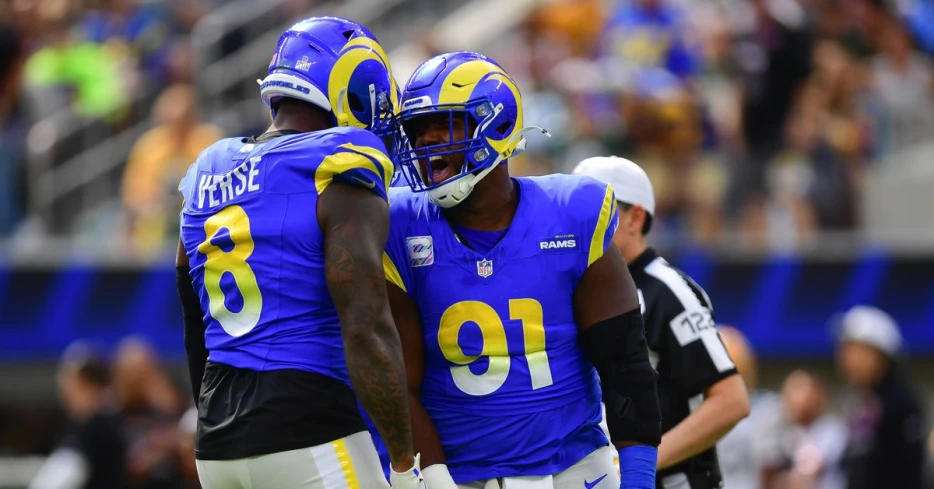
 Turf Show Times
Turf Show Times
The Rams are all-in on a young, aggressive pass rush. Can it hide a shaky secondary again?
When Aaron Donald retired prior to the 2023 season, the Los Angeles Rams had already begun to invest in their pass rush. They drafted Byron Young and Kobie Turner and then selected Jared Verse and Braden Fiske a year later. The Rams were never going to replace Donald, but they could try to recreate him in the aggregate. It took four picks inside the top-100, but that’s exactly what the Rams did.
The Rams’ young pass rush became the team’s identity in 2024 and they will rely on it once again this season. This is a young defense that’s going to continue to grow and the pass rush is something that they can fall back on. Additionally, the Rams haven’t invested heavily in the secondary. The best way that the Rams can help a below average secondary is with a pass rush. If the pass rush can get to the quarterback and affect the throw, it significantly helps the secondary.
Heading into 2025, the Rams will continue to rely on their young pass rush to help the secondary. It’s arguably the most important element of their defense. In 2024, the Rams ranked 12th in EPA per play when they got pressure. When they didn’t, they ranked 28th. That group will need to carry the load once again in 2025 which is a big ask for a young pass rush.
Despite their talent and last season’s success, it’s fair to wonder whether or not that is sustainable and if the Rams have put too many eggs in the pass rush basket. A pass rush has many moving parts and can be volatile year-over-year. Even in 2024, the Rams pass rush took a step back over the second half of the season.
The Rams finished the season ranked 10th in quarterback pressure rate at 35.6 percent. However, if you break up the season into two parts, there are two very different stories. In Weeks 1-9, the Rams pass rush had four games with a quarterback pressure rate of over 40 percent. Conversely, from Weeks 10-17, they had one such game.
From a pressure standpoint, the Rams had 115 pressures on 252 pass plays for a rate of 45.6 percent in Weeks 1-9. In Weeks 10-17, that was just 30.1 percent as they created 90 pressures on 299 pass plays. That’s a 15.5 percent drop-off.
Since NFL Pro started tracking quarterback pressure rate in 2018, an average of 4.2 teams that ranked inside the top-10 did so again the following year. Additionally, on average, 1.8 teams that ranked inside the bottom-half of the top-10 repeated the next year.
This isn’t to say that the Rams can’t or won’t sustain their pressure rate in 2025. They have the pieces in place to do so. Teams that have been able to sustain their pass rush year-over-year have either had a well-balanced front, an elite pass rusher, or a...